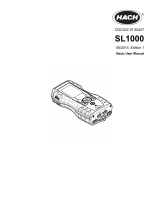Table of Contents
Specifications.............................................................................................................. 3
General information.................................................................................................. 3
Safety information........................................................................................................ 3
Use of hazard information............................................................................................ 4
Precautionary labels.................................................................................................... 4
Product overview......................................................................................................... 4
Product components.................................................................................................... 5
Installation..................................................................................................................... 6
Connect to AC power................................................................................................... 6
Install the batteries....................................................................................................... 6
User interface and navigation.............................................................................. 7
User interface.............................................................................................................. 7
Display description....................................................................................................... 8
Navigation.................................................................................................................... 9
Startup........................................................................................................................... 10
Turn the meter on and off.......................................................................................... 10
Change the language................................................................................................ 10
Change the date and time......................................................................................... 10
Connect a probe........................................................................................................ 11
Standard operation.................................................................................................. 11
About calibration........................................................................................................ 11
About sample measurements.................................................................................... 11
About check standards.............................................................................................. 11
Use a sample ID........................................................................................................ 12
Use an operator ID.................................................................................................... 12
Data management.................................................................................................... 12
About stored data...................................................................................................... 12
View stored data........................................................................................................ 12
View stored probe data....................................................................................... 13
Print stored data........................................................................................................ 13
Change the report options.................................................................................. 14
Send data to a USB storage device........................................................................... 14
Open data files on a PC............................................................................................. 15
Data file description................................................................................................... 15
Remove column headers........................................................................................... 17
Send data directly to a computer............................................................................... 17
Advanced operation................................................................................................ 17
Security options......................................................................................................... 17
Turn Security Options on.................................................................................... 18
Full access options menu................................................................................... 18
Restricted operator access options menu.......................................................... 19
Set the display options............................................................................................... 19
Set the sound options................................................................................................ 20
Set the probe calibration reminder..................................................................... 20
1


























